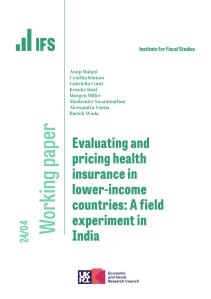Much of lifetime healthcare spending is concentrated at the end of life. This paper uses survey data linked to administrative hospital and mortality records to examine how the pattern of end-of-life hospital inpatient spending varies across different groups within a large public hospital system in England. In line with existing studies we find that spending rises sharply at the end of life even after controlling for changes in health, but the pattern of these increases varies across household composition and socioeconomic status. Quarterly spending increases more sharply for those in couples at the end of life: a 10% reduction in time to death is associated with a 10% rise in individual spending among couples, but only 8% for singles. Spending is also lower in the last 18 months of life for those with no formal qualifications relative to their more educated peers due to lower use of elective care. Differences across groups are not explained by differences in observed morbidity or cause of death, but could be explained by differential access to, or preferences for, care. These results suggest that policymakers should consider broader trends in sociodemographic attributes when forecasting future health spending and in evaluating inequity in healthcare use.










